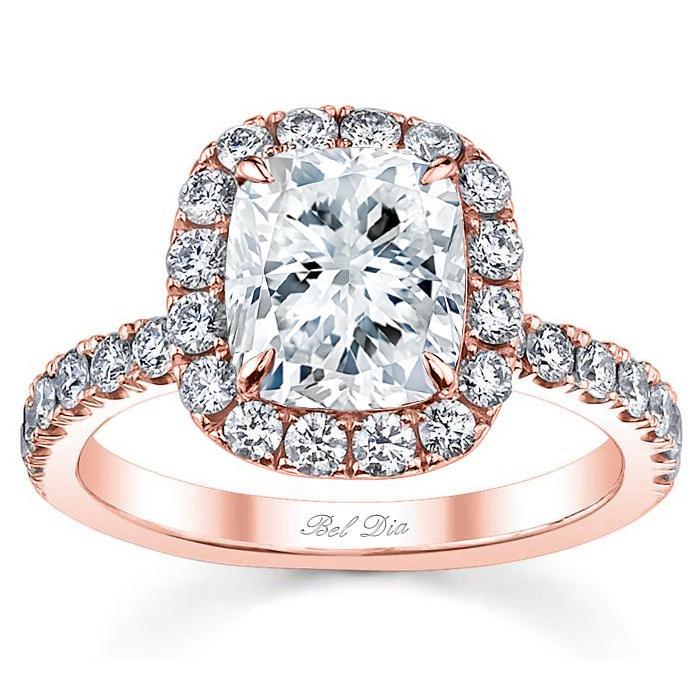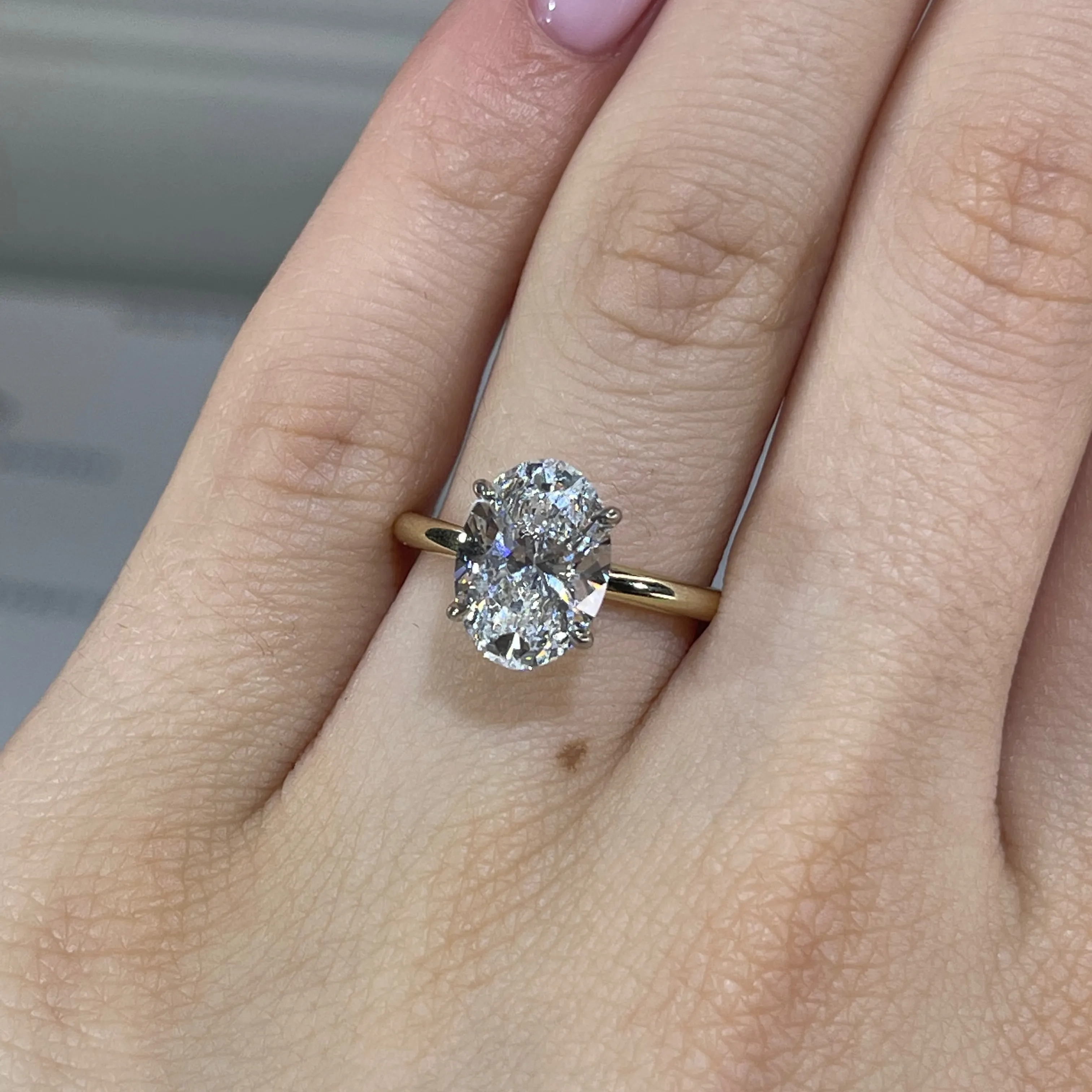Comprehending the Benefits of Laboratory Grown Diamond Interaction Rings in Today's Market
Lab-grown Diamond engagement rings are becoming increasingly popular in today's market. These options to mined rubies provide a range of benefits that interest contemporary customers. From environmental sustainability to set you back savings, lab-grown rubies provide an engaging choice. Their enhanced top quality and customization alternatives further add to their appeal. The growing passion increases concerns about the ramifications of these choices. What variables should pairs think about when selecting lab-grown over standard rubies?
The Environmental Benefits of Lab-Grown Diamonds
As customers increasingly prioritize sustainability, lab-grown diamonds become a compelling alternative to their extracted equivalents. These synthetic gems are generated in controlled settings, markedly decreasing the eco-friendly impact related to conventional Diamond mining. The extraction of all-natural diamonds typically results in environment damage, dirt disintegration, and water air pollution, devastating neighborhood communities. In contrast, lab-grown diamonds require less land and water, decreasing resource depletion.
Furthermore, the energy utilized in the creation of lab-grown diamonds can be sourced from renewable resource, further decreasing their environmental effect. This procedure not just aesthetics carbon exhausts yet also advertises sustainable practices within the jewelry sector. Consumers who go with lab-grown diamonds add to a more ethical and environmentally friendly market, straightening their buying options with their worths. On the whole, lab-grown diamonds provide a remedy that balances high-end with ecological obligation, interesting a growing market worried regarding sustainability.
Cost-Effectiveness of Lab-Grown Involvement Rings
While many pairs look for to stabilize quality and spending plan when picking engagement rings, lab-grown diamonds supply a cost-effective alternative without compromising on elegance or longevity. Normally valued 20-40% less than their natural counterparts, lab-grown diamonds allow couples to assign their budget more flexibly, enabling larger carat weight dimensions or greater quality rocks for the very same cost. This affordability does not diminish the aesthetic appeal; lab-grown rubies display the same radiance and clarity as mined rubies, many thanks to the same chemical and physical residential properties. Additionally, the market for lab-grown rubies is broadening, bring about affordable pricing and increased schedule. Couples can likewise enjoy a wider array of styles and settings without the monetary stress frequently related to typical diamonds. On the whole, lab-grown interaction rings provide an attractive economic option, making them increasingly prominent among modern-day couples that prioritize both expense and quality in their investing in decisions.
Moral Considerations in Selecting Lab-Grown Diamonds

Consumers are increasingly worried regarding the beginnings of their purchases, and lab-grown diamonds provide a clear supply chain. Each Diamond comes with certification outlining its development process, ensuring buyers can make informed choices. Furthermore, the manufacturing of these rubies usually utilizes renewable energy sources, further lining up with eco-conscious worths. For people focusing on ethical consumption, lab-grown diamonds offer a liable choice that combines deluxe with ethical honesty, interesting contemporary sensibilities in engagement ring choices.

Top quality and Beauty: Contrasting Lab-Grown and Mined Diamonds
The contrast in between lab-grown and mined rubies reveals noteworthy differences in aesthetic attributes and sturdiness. Lab-grown diamonds commonly show premium clearness and shade consistency, while extracted diamonds can provide special additions and variants. Furthermore, both types share the exact same hardness, making them similarly appropriate for engagement rings.
Aesthetic Characteristics Contrast
How do lab-grown diamonds contrast to their extracted counterparts pertaining to visual attributes? Both kinds of diamonds share identical physical and chemical residential properties, making it testing to compare them without specialized devices. Lab-grown rubies typically exhibit fewer imperfections and inclusions, leading to superior clarity. Furthermore, they can be generated in a wider variety of shades, permitting for unique modification alternatives. While extracted diamonds are valued for their all-natural beginning and regarded rarity, lab-grown rubies can attain equivalent beauty and radiance, frequently at a lower expense. Inevitably, the selection in between the two may come down to personal preference, however visually, lab-grown diamonds stand as a compelling option, flaunting quality that rivals their natural counterparts.
Longevity and Firmness Variables
While both lab-grown and extracted rubies have exceptional longevity, their hardness remains a specifying particular that emphasizes their viability for daily wear. Rubies are ranked a 10 on the Mohs range of mineral firmness, making them the hardest natural product known (lab grown diamond engagement rings). This characteristic guarantees that both sorts of rubies stand up to scraping and preserve their radiance gradually. Lab-grown rubies, produced under controlled problems, display the exact same hardness and physical properties as their extracted equivalents. Because of this, they offer a attractive and resistant choice for engagement rings. Customers can with confidence choose either type, recognizing that both supply long-lasting high quality. Ultimately, the option in between lab-grown and extracted rubies might boil down to individual worths instead than differences in sturdiness or hardness
Personalization Options for Lab-Grown Diamonds
Lab-grown diamonds use a variety of modification options that deal with specific choices. From one-of-a-kind layout opportunities to numerous color and cut options, these rubies can be tailored to match any personal style. This level of customization guarantees that each interaction ring can reflect the distinct preferences of the user.
One-of-a-kind Design Opportunities
Countless design possibilities await those curious about lab-grown Diamond involvement rings, allowing pairs to express their distinct love tales. With the versatility of lab-grown diamonds, designers can check out a broad range of styles, from timeless solitaires to detailed vintage settings. Couples can select from different forms, such as round, princess, or emerald cuts, each supplying a distinct personality. Additionally, the capacity to choose distinct steel kinds, including white gold, rose gold, or platinum, more boosts customization. Lab-grown diamonds can additionally be ethically sourced in numerous carat weight weights, allowing the original source couples to find the perfect balance in between dimension and budget plan. This versatility allows each ring to mirror the private preferences and preferences of the couple, making it a really personal symbol of their commitment.
Customization for every single Style
The flexibility of lab-grown diamonds prolongs past unique design possibilities, supplying substantial personalization options to match every pair's style. Couples can select from various settings, steels, and band styles, assuring that their involvement ring mirrors their originality. Choices range from traditional jewelry to contemporary halo styles, permitting individual expression in every selection. Furthermore, couples can pick certain functions such as inscription, adding emotional value and individuality to their rings. The ability to customize guarantees that each ring is not just a representation of love yet also a reflection of personal preference and way of living. This level of personalization makes lab-grown rubies an attractive option for those looking for a significant and distinct involvement ring.
Shade and Cut Options
Engagement rings including lab-grown diamonds supply a stunning selection of shade and cut selections that boost their appeal and uniqueness. Unlike typical rubies, lab-grown choices can be produced in a comprehensive series of shades, including pink, blue, and yellow, permitting couples to select an uniquely personal touch. These lively shades can function as a significant representation of love and commitment.
Lab-grown rubies come in various cuts, consisting of round, oval, and princess, each adding to the stone's luster and visual appeal. This adaptability enables pairs to customize their rings to show their designs and preferences. Eventually, the schedule of diverse color and cut options makes lab-grown Diamond interaction rings a preferred selection for contemporary pairs looking for personalization.
Patterns and Popularity of Lab-Grown Diamonds in 2023
As customers significantly prioritize sustainability and ethical factors to consider in their purchasing decisions, the popularity of lab-grown diamonds has surged in 2023. This year, the marketplace has actually observed a notable shift, with more couples selecting these rubies because of their reduced environmental influence and clear sourcing procedures. Lab-grown rubies are not just significantly extra cost effective than their extracted equivalents, yet they likewise supply a selection of designs and modification alternatives that interest modern-day customers.
Stores have actually replied to this expanding trend by expanding their collections and emphasizing the one-of-a-kind top qualities of lab-grown stones, such as their radiance and clarity. Social media and influencer recommendations have better intensified recognition, making lab-grown rubies a stylish choice for engagement rings. As education and learning regarding the benefits proceeds to spread out, it read this post here is expected that the marketplace share of lab-grown rubies will certainly remain to rise, strengthening their place in the jewelry sector.
Frequently Asked Inquiries
Exactly How Are Lab-Grown Diamonds Created in a Research laboratory?
Lab-grown diamonds are produced making use of 2 primary approaches: High Stress Heat (HPHT) resembles all-natural Diamond development conditions, while Chemical Vapor Deposition (CVD) uses gas to speed up carbon onto a substrate, forming rubies layer by layer.
Do Lab-Grown Diamonds Hold Their Worth Gradually?
Lab-grown diamonds normally do not hold their value along with natural rubies. Market changes and customer assumptions affect resale costs, leading to reduced long-term value retention for lab-grown choices contrasted to their natural equivalents.
Can Lab-Grown Diamonds Be Resized Like Mined Diamonds?
Lab-grown diamonds can be resized likewise to mined rubies, as they possess similar physical residential properties. Jewelers generally use basic techniques for resizing, making sure that both kinds of rubies maintain their integrity and visual allure throughout the procedure.
Are Lab-Grown Diamonds Available in Different Forms and Sizes?
Lab-grown diamonds are without a doubt offered in a selection of dimensions and forms. They can be tailored to meet private preferences, supplying choices like round, princess, oval, and emerald cuts, to name a few, making certain varied choices for customers.
Just how Do I Confirm the Authenticity of a Lab-Grown Diamond?
To verify the credibility of a lab-grown Diamond, one must consult a reputable gemologist or obtain a qualification from an identified grading research laboratory, which usually includes information concerning the Diamond's beginning and attributes.
Lab-grown rubies are produced in reference controlled atmospheres, removing the ecological damage typically linked with conventional Diamond mining. lab grown diamond engagement rings. Lab-grown rubies usually exhibit remarkable quality and color consistency, while extracted diamonds can offer special inclusions and variants. While extracted rubies are valued for their all-natural beginning and viewed rarity, lab-grown rubies can attain equal appeal and brilliance, typically at a lower cost. Lab-grown rubies usually do not hold their value as well as all-natural rubies. Lab-grown rubies can be resized in a similar way to mined rubies, as they possess equivalent physical residential properties